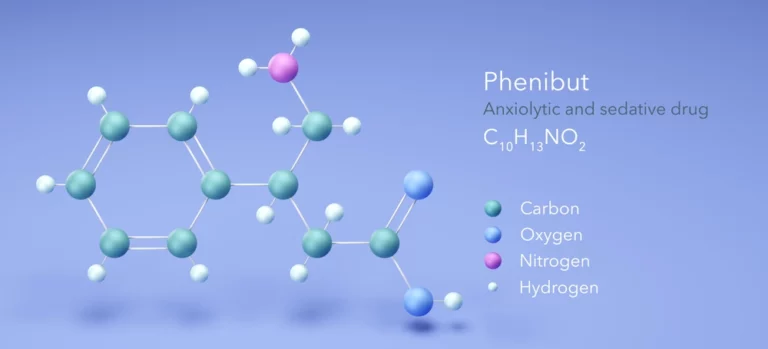Meth is a dangerously addictive drug with significant and potentially fatal side effects. If you’re a chronic meth user, you’ll likely experience intense withdrawal symptoms when you quit using. Most people who want to quit using meth don’t fully understand the detox process. And that’s perfectly okay. This article is meant to help and provide all the resources you need.
Once you understand the meth detox process and how long it takes, you’ll be more physically and mentally prepared than others who try to quit cold turkey or without professional help.
Key point of this blog: It usually takes 5 days for meth to leave your system, 7 days for intense withdrawal symptoms to subside, and up to several months for lingering effects to subside.
Connect With Us Now
Reach out to us now for immediate support, or let us know the best time to contact you through our confidential callback service. Your journey to healing is just a conversation away.
3 Stages Of Meth Withdrawal
Depending on your metabolism, meth withdrawal can begin within hours of last use. There are several phases of meth withdrawal:
- Crash: This stage begins within hours of last use and typically includes cravings, fatigue, insomnia, agitation, and anxiety.
- Acute withdrawal: This stage begins within the first few days and can last for several weeks. Symptoms include mood disturbances (such as anxiety, depression, irritability), sleep disturbances (insomnia, hypersomnia), increased appetite, and physical discomfort (muscle aches, headaches, tremors).
- Subacute withdrawal: Also known as the “protracted” or “post-acute” phase, this stage can persist for months to years after discontinuing methamphetamine use. Symptoms may include continued cravings, mood swings, sleep disturbances, and difficulties with concentration and motivation. Some individuals may also experience intermittent periods of intense cravings or relapse during this stage.

Factors That Influence Withdrawal Intensity
Factors influencing the severity of withdrawal are:
- Duration of use
- The potency of meth used
- Physical and mental health
- Extent of abuse
- History of other substance abuse
- Physical dependence
Note: Experts never recommend detoxing from meth on your own as the side effects can be highly uncomfortable, which can increase the chance of relapse.
Stages Of Medical Meth Detox
Generally, the meth detox process occurs in three parts:
- Medical personnel will assess your physical condition and drug history.
- Then, you start the stabilization process, where all addictive substances gradually leave your bloodstream with the help of prescription medication, comfort medication, fluids, vitamins, and nutritional foods.
- Once all substances have been metabolized and removed from your body, you transition into the treatment stage.
The stabilization portion of this process typically lasts. During this time, many people experience challenging symptoms, including depression, intense cravings, and fatigue. Having medical support is helpful to reduce your risk of relapse as you prepare to enter treatment.
Read more about alcohol: Benefits of Quitting Alcohol: A Realistic Timeline
Typical Meth Withdrawal Timeline
Here’s a general timeline of the meth withdrawal process.
- Days 1-2: Studies suggest methamphetamine use affects blood glucose levels. For the first two days, you might experience intense cravings for meth and foods high in sugar or carbohydrates as your body tries to compensate for the lack of nutrients provided during drug use. Cravings may last for several weeks. Depression is also common during this time frame.
- Days 3-5: Extreme fatigue and lethargy are common during the next three to five days. You may experience hypersomnia and sleep up to eleven hours a day.
- Days 6-7: Days six and seven can involve more tiredness and lack of motivation. Many people continue to feel symptoms of depression. However, this usually subsides after the third week, though this depends on the length and intensity of your meth use.
- Week 1: Beyond the first week, your physical symptoms should begin to improve. While you may still experience mood swings, depression, and cravings, medication, and therapeutic strategies can help you manage psychological symptoms as well as any sleep disorders if they develop.
- Week 2: Two weeks after your medical detox, you will begin feeling much better, although some anxiety and depression symptoms may remain. Your sleep and appetite will improve, and you will experience increased energy.
- Beyond 2 Weeks: Most people feel much better after a month as the acute withdrawal phase ends. At this point, you may experience lingering symptoms of mood swings, depression, and anxiety. However, you can work with clinicians through treatment and therapy to develop positive and effective coping mechanisms to help you manage these feelings.
Take Our Addiction Quiz for Recovery Insights
How MAT Can Help With Meth Detox
Withdrawing from methamphetamine can be challenging. Currently, there isn’t an FDA-approved withdrawal medication available to specifically treat methamphetamine dependence. However, detox specialists and psychiatrists can reduce your psychological and physical withdrawal symptoms through medication-assisted treatment (MAT). The most frequently used medications include:
- Antidepressants to manage depression symptoms
- Anti-anxiety medications to alleviate agitation or anxiety
- Sleep aids to mitigate insomnia and sleep disturbances (medical detox centers typically do not allow controlled sleep medications, such as Ambien or Sonata).
- Anti-psychotics to manage symptoms like paranoia and hallucinations
Although medications for depression and anxiety are beneficial during this time, it’s crucial to address underlying contributors, including mental health conditions like post-traumatic stress disorder, bipolar disorder, or borderline personality disorder.
Read more: Why You Shouldn’t White Knuckle Sobriety

What To Expect After Meth Detox
Once you finish meth detox, you’ll transition into an addiction treatment program to address the underlying reasons behind substance use and learn how to develop positive coping mechanisms to avoid future drug use. Common treatment programs include intensive outpatient programs (IOP), partial hospitalization (PHP), and residential/inpatient programs. The program you enter depends on several factors, such as whether you can maintain sobriety outside of the treatment center. Most people starting treatment for the first time benefit most from inpatient treatment.
Inpatient Treatment Programs
Inpatient treatment involves 24/7 care in a residential setting. It usually includes everything a client needs for long-term treatment, including comfortable housing, bathrooms, a cafeteria, on-site chefs, and recreation rooms. It’s important to fully immerse yourself in a safe and sober environment. Inpatient treatment days are highly structured, involving group activities, therapies, workshops, and free time.
Partial Hospitalization
Partial hospitalization programs are less intense than residential treatment. During partial hospitalization programs, you receive care during the day and reside at a sober living facility or home instead of at the treatment center. Partial hospitalization programs help clients transition out of intense treatment and reintegrate into their regular routines again.
Intensive Outpatient Programs (IOP)
Intensive outpatient treatment is the lowest level of addiction treatment, perfect for individuals who’ve already completed a higher level of care and established the necessary skills to maintain sobriety outside of treatment. Partial hospitalization programs are similar to typical 40-hour work weeks and involve the same treatment methods as inpatient and PHP, including individual and group therapy, medication-assisted treatment, and holistic activities.
What Therapeutic Modalities Are Available?
Successful recovery requires active participation on your part as you begin to address the underlying issues behind your addiction. The chance of successful recovery increases when treatment addresses your emotional, physical, and individual needs.
Individual Therapy
Individual therapy aims to help you address behavioral and emotional health. Many clients experience traumatic events that can contribute to substance abuse, and individual therapy is a safe place to discuss these issues and overcome negative coping mechanisms. By understanding your thoughts and behavior patterns, you will better handle stressful situations, navigate interpersonal conflicts, and identify triggers.
Group Therapy
Group therapy is an essential part of addiction recovery. Groups provide peer support from others with similar addictions and can apply healthy influence for members to abstain from drugs. Groups also help decrease feelings of isolation often felt by those who have substance abuse disorders. Group therapy provides newcomers to recovery with helpful information, such as how to avoid triggers and why it’s important to abstain. Group therapy can also help individuals in recovery learn how to self-identify as someone in recovery.
Holistic Therapy
While in treatment, trained specialists will lead you in various holistic activities and treatments meant to nurture your mind and body. By engaging in these activities, you will learn self-acceptance, reclaim your power over substance abuse, and find your voice again. These therapies include:
- Artistic expression
- Yoga
- Music therapy
- Breathing exercises
- Experiential therapy
- Therapeutic art sessions
Some clients are drawn more to certain types of therapy than others. As you work through the program, you may discover new interests, hobbies, and creative activities to support your recovery.
Are You Covered For Treatment?
Knoxville Recovery Center partners with numerous private insurance providers. Our team is committed to assisting you in quickly and effortlessly verifying your insurance coverage for treatment.
Long-Term Support and Aftercare
Maintaining sobriety is a lifelong commitment, which is why a short stay at a residential facility isn’t enough to avoid relapse. Research shows the longer you receive addiction treatment services, the more likely you are to stay sober. Aftercare planning helps individuals transition from intense treatment programs so they don’t feel suddenly pulled away from resources and in-person support.
While some clients prefer aftercare programs closer to home, others feel some distance is necessary to continue their recovery. Whichever option is best for you, your case manager will work with you and address your concerns as you transition to a different facility.
Safe & Comfortable Medical Meth Detox In Knoxville, TN
If you or someone you know wants to detox from meth and avoid the dangers of withdrawal, contact Knoxville Recovery Center. We offer two of the most foundational aspects of addiction recovery: medical detox and residential treatment. Clients can enter our treatment program in a clean and comfortable dedicated detox environment with access to the amenities offered in residential treatment, including MAT, on-site therapists, and calming healing exercises. Once clients finish detox, they can immediately transfer to our inpatient wing and begin the long-term treatment process. Call, email, or fill out a form today to get started.








